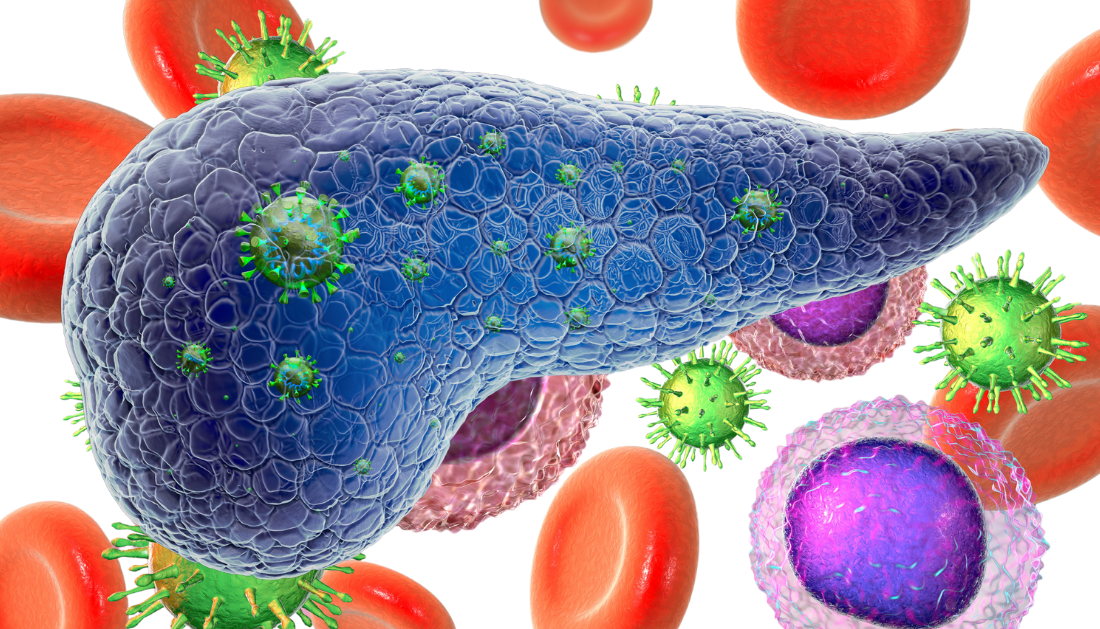

New Immune Map Reveals Key Insights for Pancreatic Cancer Treatment
A newly constructed immune map has revealed distinct immune cell infiltration patterns in pancreatic ductal adenocarcinoma (PDAC), the most lethal form of pancreatic cancer. The study, published in Nature Communications, provides critical insights into immune suppression mechanisms and suggests tailored immunotherapy approaches could improve treatment outcomes.
Understanding the Pancreatic Tumor Microenvironment
PDAC has a five-year survival rate of less than 10%, with only 0.5–1% of patients currently receiving immunotherapy. This low response rate highlights the urgent need for precision medicine approaches targeting immune cell interactions within tumors.
Researchers analyzed single-cell RNA sequencing (scRNA-seq) and immune cell profiling from 12 treatment-naïve patients, identifying two major tumor immune profiles:
- Adaptive-enriched (AE) tumors: high B- and T-cell infiltration, indicating potential responsiveness to immunotherapies.
- Myeloid-enriched (ME) tumors: high regulatory T cells (Tregs) and macrophages, contributing to an immunosuppressive microenvironment.
Key Findings: Mapping the Immune Landscape
AE tumors exhibited:
- Increased CD8+ effector memory T-cells & T follicular helper cells
- Dysfunctional germinal center responses & fewer plasma cells
- Higher IgM-positive B-cells, suggesting immune dysfunction
ME tumors showed:
- High levels of Tregs & gamma-delta T-cells contribute to immune suppression
- Lower CD8+ T-cell infiltration, reducing antitumor immune response
- Elevated macrophage-plasma cell interactions further dampen immune activity
“Understanding the immune composition of PDAC tumors may allow us to tailor treatments based on tumor immune profiles,” researchers noted.
Implications for Personalized Immunotherapy
How can this study impact future treatment?
- Adaptive-enriched tumors may benefit from checkpoint inhibitors targeting dysfunctional lymphoid structures.
- Myeloid-enriched tumors could respond better to therapies aimed at suppressing Treg activity and restoring T-cell function.
- Future clinical trials should evaluate immune infiltration over time to track tumor-immune dynamics and optimize therapy choices.
Conclusion: A Step Toward Precision Oncology
This immune mapping study marks a significant advancement in understanding how immune cells shape pancreatic tumor behavior. By identifying distinct immune profiles, researchers can develop targeted immunotherapies that may improve survival rates in PDAC patients—a crucial step toward precision oncology.
More Information: Sivakumar, S., Jainarayanan, A., Arbe-Barnes, E., et al. (2025) Distinct Immune Cell Infiltration Patterns in Pancreatic Ductal Adenocarcinoma (PDAC) Exhibit Divergent Immune Cell Selection and Immunosuppressive Mechanisms. Nature Communications16(1);1-20. doi:10.1038/s41467-024-55424-2.
more recommended stories
 Urine-Based microRNA Aging Clock Predicts Biological Age
Urine-Based microRNA Aging Clock Predicts Biological AgeKey Takeaways (Quick Summary) Researchers developed.
 Circadian Control of Neutrophils in Myocardial Infarction
Circadian Control of Neutrophils in Myocardial InfarctionKey Takeaways for HCPs Neutrophil activity.
 E-Cigarette Use and Heart Attack Risk in Former Smokers
E-Cigarette Use and Heart Attack Risk in Former SmokersKey Takeaways for Clinicians and Nurses.
 36-Week Pre-eclampsia Screening May Reduce Term Risk
36-Week Pre-eclampsia Screening May Reduce Term RiskA New Preventive Strategy for Term.
 Cardiovascular Risk and Sudden Cardiac Death in Diabetes
Cardiovascular Risk and Sudden Cardiac Death in DiabetesRising Sudden Cardiac Death (SCD) Risk.
 Poor Kidney Function and Alzheimer’s Biomarkers Explained
Poor Kidney Function and Alzheimer’s Biomarkers ExplainedPoor kidney function may influence levels.
 Walking Speed Before Hip Replacement Predicts Recovery
Walking Speed Before Hip Replacement Predicts RecoveryNew Evidence Points to a Simple,.
 Neuroblastoma Drug Combo Extends Survival in Models
Neuroblastoma Drug Combo Extends Survival in ModelsA Promising Shift in High-Risk Neuroblastoma.
 How Soybean Oil Impacts Weight Gain and Metabolism
How Soybean Oil Impacts Weight Gain and MetabolismWhy Soybean Oil May Affect Metabolism.
 Coffee and Cognitive Function: Evidence Review
Coffee and Cognitive Function: Evidence ReviewA new narrative review in Cureus.

Leave a Comment